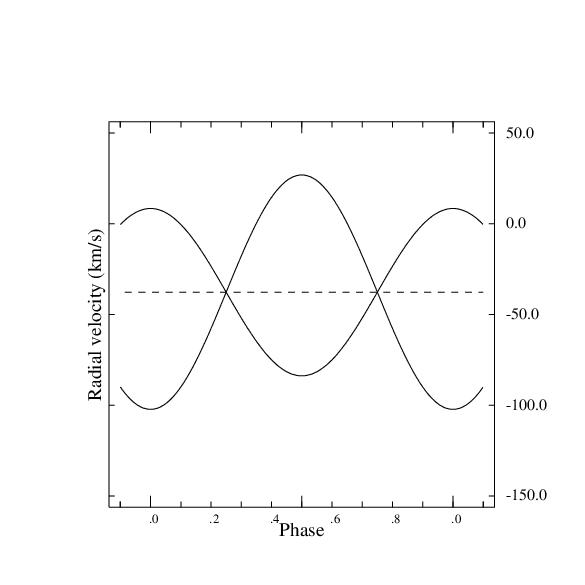Basic data (System:594)
| C1900.0 | : | 09562+1754
|
|---|
| C2000.0 | : | 100140427+17243270
|
|---|
| Comp. | : | B
|
|---|
| Magn. | : |
|
|---|
| Spect. | : | M1 ; M3
|
|---|
Identifiers:
| BD +18 2307 | GAIADR2 623076270045202048 | GAIADR3 623076270045202048 | GCVS XY Leo
|
| HIP 49136
|
Orbit
| Element | | Value | Std. dev.
|
|---|
| Period (d.) | : | 0.8050 |
|
|---|
| Epoch (xJD-2,400,000.0) | : | 46426.319 | (see note)
|
|---|
| Reference T0/epoch | : | JD
|
|---|
| Eccentricity | : | 0.0 |
|
|---|
| omega primary (deg.) | : | 0.0 |
|
|---|
| K1 (km/s) | : | 46.1 |
|
|---|
| K2 (km/s) | : | 64.6 |
|
|---|
| V0 (km/s) | : | -37.7 |
|
|---|
| sigma residuals primary | : |
|
|---|
| sigma residuals secondary | : |
|
|---|
| #RV primary | : |
|
|---|
| #RV secondary | : |
|
|---|
| Grade | : | 2.0
|
|---|
| Contributor | : | DAO
|
|---|
| Status | : | PUB
|
|---|
| Bibcode | : | 1987ApJ...317..333B
|
|---|
|
|---|
|
|
|---|
| Derived quantities (on the fly, from the above quantities) |
|---|
|
|---|
|
|
|---|
| a1sini (km) | : | 510306 | 0
|
|---|
| a2sini (km) | : | 715093 | 0
|
|---|
| m1sin**3 i (sol.mass) | : | 0.0662806 | 0
|
|---|
| m2sin**3 i (sol.mass) | : | 0.0472993 | 0
|
|---|
Note
The contact binary XY Leo has long been known to display period changes that
were apparently themselves periodic. A third body has often been suspected, but
never detected until Barden found the lines of two other spectra in the
combined light of the system and derived orbital elements for another
short-period pair. The presumption is therefore strong that these two pairs are
revolving around their common centre of mass in about 20 years. Emission
features at H-alpha and H and K are ascribed by Barden to this second binary
which he believes to be of the BY Dra type. The orbit is assumed circular and
the epoch is the time of superior conjunction of the primary component. Barden
gives no direct estimate of the magnitude of the companion, which is not seen
separately from the contact binary and the spectral types are estimates based
on masses derived from an assumed orbital inclination (31 deg) for the new
pair. Barden believes the orbits in the quadruple system are not coplanar.
Plot

Encapsulated PostScript file
T. Merle

